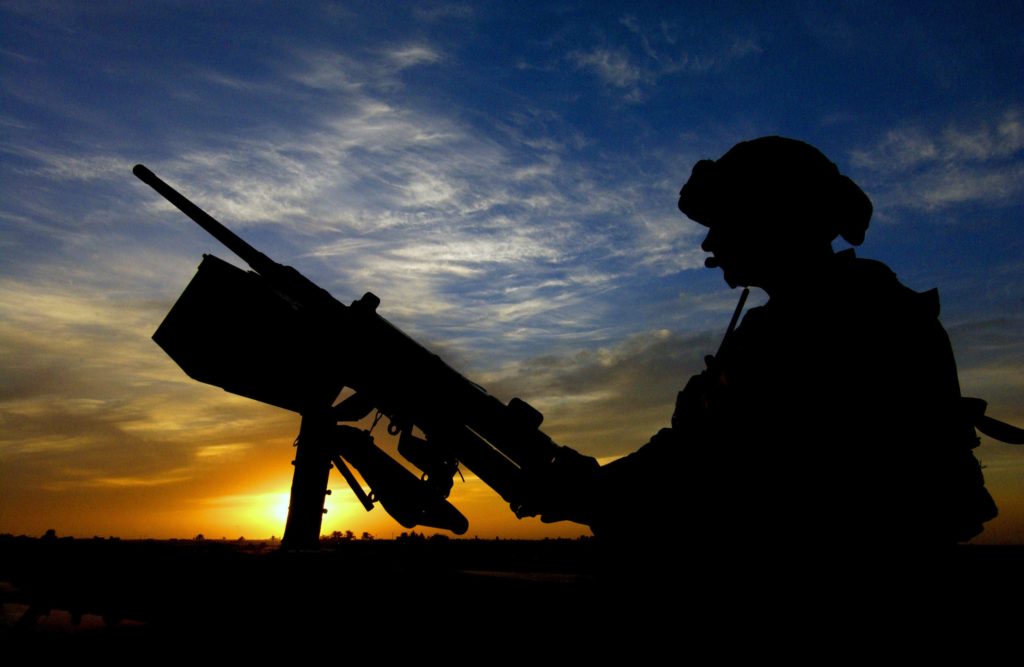The Peninsula
The Difference Between a Preventative Attack and Preemption Against North Korea

By Troy Stangarone
In 1994, then President Bill Clinton considered a military strike to take out North Korea’s nuclear facilities. He ultimately decided against the use of military force and in the two decades since the United States and the international community have primarily responded to North Korea’s continued development of nuclear weapons and their component delivery systems with a mixture of sanctions and engagement. However, with North Korea’s two intercontinental ballistic missile (ICBM) tests in July, Pyongyang is nearing the point of being able to attack the United States’ mainland. As this prospect becomes increasingly more of a reality, there have been growing discussions of the option of the United States taking military action against North Korea.
In the most recent standoff between North Korea and the United States, President Donald Trump suggested that North Korea would be met with “fire and fury” if it continued to threaten the United States and North Korea responded that it might place the U.S. territory of Guam in an “enveloping fire,” increasing concerns that war could break out on the Korean peninsula. With the United States and North Korea now attempting to deescalate tensions the immediate concern of the United States undertaking military action against North Korea has receded somewhat. However, should the prospect of utilizing a military option return, in the absence of a direct attack by North Korea the United States would be left with the options of taking preventative military action or preemptive military action.
While at times used interchangeably, preemptive military action and preventative military action are actually quite different. In many ways the key differences between a preemptive and preventative attack relate to timing, capability, and intent. A preemptive attack is one where the state taking the preemptive action believes that an attack is imminent with a known capability and that there is no other course of action that would forestall the attack. While attacking first, that action is innately one of self-defense.
In the case of North Korea, the United States and its allies might undertake a preemptive attack if there was intelligence clearly indicating that Pyongyang was preparing to conduct a nuclear strike or undertaking troop movements that signaled that an attack on South Korea was imminent. Because of North Korea’s development of nuclear weapons and prior threats to conduct strikes on Busan or Tokyo, the costs of waiting for the North Korean attack before responding could be extremely high. The advantage of taking out North Korea’s weapons capabilities prior to an imminent attack is that preemptive action holds the potential of limiting the damage to South Korea, the United States, and potentially Japan, in any conflict with North Korea that seemed certain.
A preventative strike differs from a preemptive strike in that there is no immediate threat of attack. In fact, it may be unclear that the state in question intends to attack at all. Instead the attack is intended to prevent a state from developing a threatening capability. In contrast to a preemptive strike, the goal is not to strike first in a conflict that is expected to happen, but rather to fight a conflict sooner rather than later when the military situation may be less advantageous.
Applied to North Korea, a preventative strike would be designed to take out North Korea’s nuclear and missile capabilities before it is able to threaten the United States with a nuclear weapon, not because it is actually in the process of preparing to launch a nuclear weapon. It is less clear that a preventative attack would lead to a lower level of costs for the United States and its allies than refraining from a preventative attack since North Korea is already capable of striking South Korea and Japan with nuclear weapons and there is less certainty about the regime’s intent in using the weapons. In this case, deterrence and diplomacy may be the lowest cost solutions.
A preventative attack also seems unlikely for political and legal reasons. While genuine preemption is viewed as a legitimate act of self-defense, a preventative attack is not viewed as legitimate in international law. International law may not always constrain the actions of states, but the perception of legitimacy of an attack plays an important role in the political calculations of whether to proceed with an attack. In the current situation, we can already see a pushback on a preemptive attack on North Korea by South Korea which has suggested that only it could authorize an attack on the North.
If the United States ultimately determines that it is unable to tolerate North Korea having an ICBM and nuclear weapon, an attack to remove that threat would be an act of prevention. However, if North Korea were to finish its weapons development and then look to use those weapons against the United States, an attack against an imminent threat from North Korea would be one of preemption.
Troy Stangarone is the Senior Director for Congressional Affairs and Trade at the Korea Economic Institute of America. The views expressed here are the author’s alone.
Photo from Morning Calm Weekly Newspaper Installation Management Command, U.S. Army’s photostream on flickr Creative Commons.
